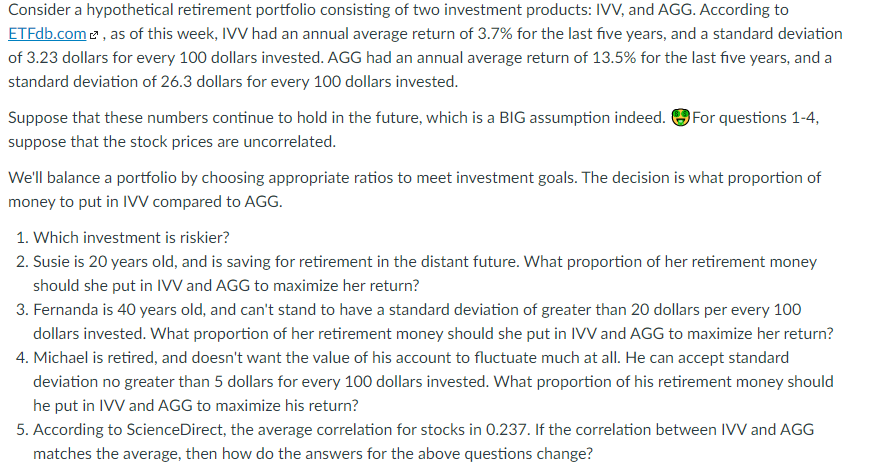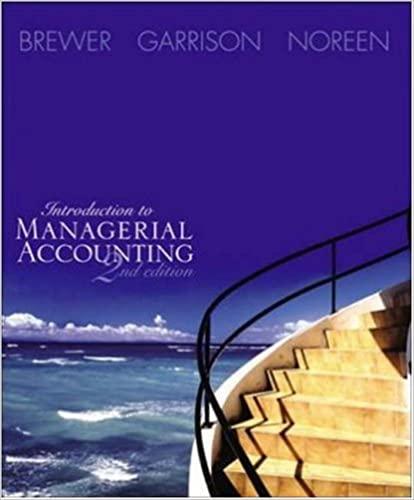
please go step by step
IVV
| $217,487,000.00 | 3,365,794 |
AGG
Consider a hypothetical retirement portfolio consisting of two investment products: IW, and AGG. According to ETFdb.come, as of this week, IVV had an annual average return of 3.7% for the last five years, and a standard deviation of 3.23 dollars for every 100 dollars invested. AGG had an annual average return of 13.5% for the last five years, and a standard deviation of 26.3 dollars for every 100 dollars invested. Suppose that these numbers continue to hold in the future, which is a BIG assumption indeed. For questions 1-4, suppose that the stock prices are uncorrelated. We'll balance a portfolio by choosing appropriate ratios to meet investment goals. The decision is what proportion of money to put in IV compared to AGG. 1. Which investment is riskier? 2. Susie is 20 years old, and is saving for retirement in the distant future. What proportion of her retirement money should she put in IW and AGG to maximize her return? 3. Fernanda is 40 years old, and can't stand to have a standard deviation of greater than 20 dollars per every 100 dollars invested. What proportion of her retirement money should she put in IV and AGG to maximize her return? 4. Michael is retired, and doesn't want the value of his account to fluctuate much at all. He can accept standard deviation no greater than 5 dollars for every 100 dollars invested. What proportion of his retirement money should he put in IV and AGG to maximize his return? 5. According to ScienceDirect, the average correlation for stocks in 0.237. If the correlation between IV and AGG matches the average, then how do the answers for the above questions change? Consider a hypothetical retirement portfolio consisting of two investment products: IW, and AGG. According to ETFdb.come, as of this week, IVV had an annual average return of 3.7% for the last five years, and a standard deviation of 3.23 dollars for every 100 dollars invested. AGG had an annual average return of 13.5% for the last five years, and a standard deviation of 26.3 dollars for every 100 dollars invested. Suppose that these numbers continue to hold in the future, which is a BIG assumption indeed. For questions 1-4, suppose that the stock prices are uncorrelated. We'll balance a portfolio by choosing appropriate ratios to meet investment goals. The decision is what proportion of money to put in IV compared to AGG. 1. Which investment is riskier? 2. Susie is 20 years old, and is saving for retirement in the distant future. What proportion of her retirement money should she put in IW and AGG to maximize her return? 3. Fernanda is 40 years old, and can't stand to have a standard deviation of greater than 20 dollars per every 100 dollars invested. What proportion of her retirement money should she put in IV and AGG to maximize her return? 4. Michael is retired, and doesn't want the value of his account to fluctuate much at all. He can accept standard deviation no greater than 5 dollars for every 100 dollars invested. What proportion of his retirement money should he put in IV and AGG to maximize his return? 5. According to ScienceDirect, the average correlation for stocks in 0.237. If the correlation between IV and AGG matches the average, then how do the answers for the above questions change







